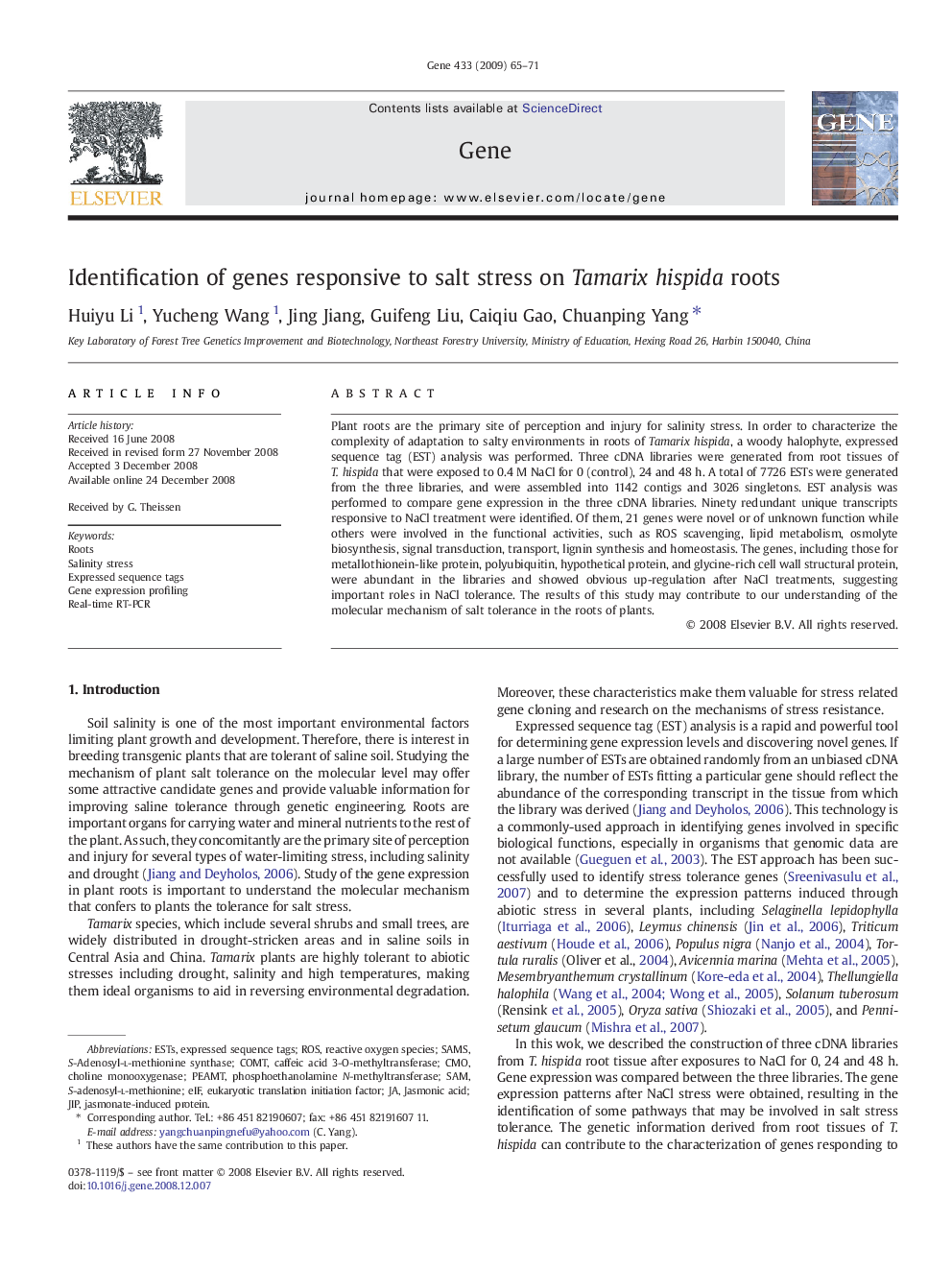| Article ID | Journal | Published Year | Pages | File Type |
|---|---|---|---|---|
| 2819013 | Gene | 2009 | 7 Pages |
Plant roots are the primary site of perception and injury for salinity stress. In order to characterize the complexity of adaptation to salty environments in roots of Tamarix hispida, a woody halophyte, expressed sequence tag (EST) analysis was performed. Three cDNA libraries were generated from root tissues of T. hispida that were exposed to 0.4 M NaCl for 0 (control), 24 and 48 h. A total of 7726 ESTs were generated from the three libraries, and were assembled into 1142 contigs and 3026 singletons. EST analysis was performed to compare gene expression in the three cDNA libraries. Ninety redundant unique transcripts responsive to NaCl treatment were identified. Of them, 21 genes were novel or of unknown function while others were involved in the functional activities, such as ROS scavenging, lipid metabolism, osmolyte biosynthesis, signal transduction, transport, lignin synthesis and homeostasis. The genes, including those for metallothionein-like protein, polyubiquitin, hypothetical protein, and glycine-rich cell wall structural protein, were abundant in the libraries and showed obvious up-regulation after NaCl treatments, suggesting important roles in NaCl tolerance. The results of this study may contribute to our understanding of the molecular mechanism of salt tolerance in the roots of plants.
